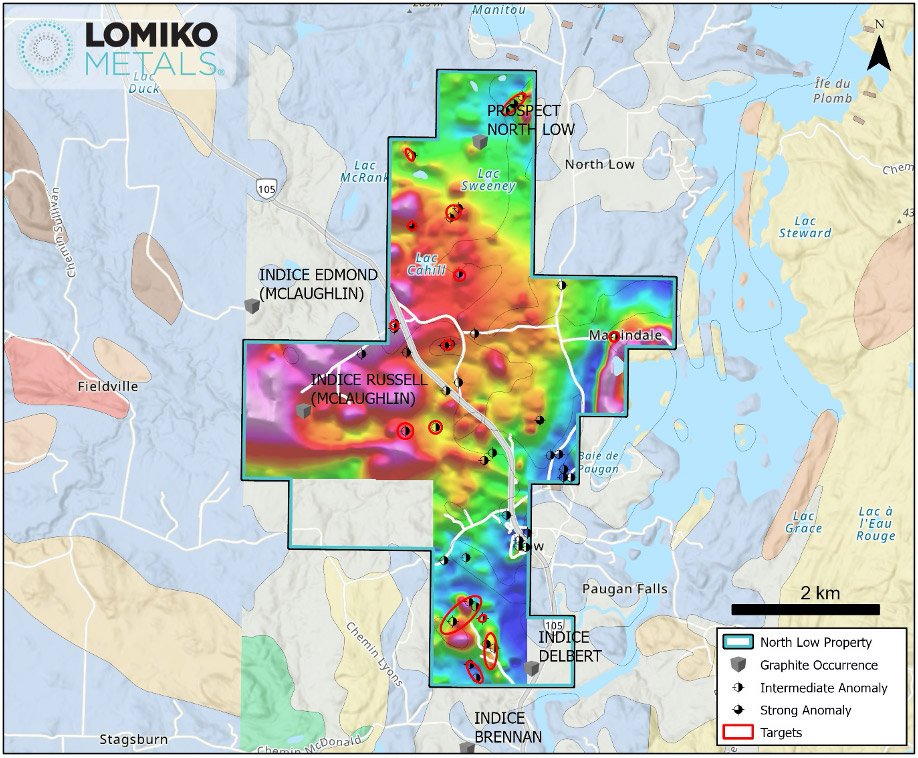A large parcel of the prospective ground within favourable geology with potential regional fold structures and three graphite showings.
Location: 40 km north of Gatineau, excellent access
# of Claims: 39
Location: 40 km north of Gatineau, excellent access
# of Claims: 39
The 231-line-km survey flown over the 39-claim North Low project located 40 km north of Gatineau identified 406 TDEM point anomalies with 21 having an intermediate to strong conductive response. Two linear TDEM trends show strong correlation with magnetic trends and are considered prospective targets for graphite-sulphide mineralization. Two other TDEM trends are associated with MAG lows or do not show any clear correlation to magnetic data. Graphite hosted within non-magnetic marble rocks may be the source of TDEM responses of this sort.

Location: Mineralized zone with outcrop located 1 km west of the village of North Low (Rang III, lots 17 and 20).
Year discovered: 1916
Discovery: Mineralized zone discovered in 1916 by prospecting. Work history: In 1916-1917, Gatineau Graphite – Prospecting. In 1918-1919, Unknown – Three boreholes (30 m) and several small surface excavations. In 2018, First Energy Metals – Mining Exploration, Geophysical Survey
Holder: Mclean & Fitsmons (1920)
Lithology: Irregular bands and veins of graphite along the contact of gabbro dykes cutting calcitic marble.
Morphology: This graphite mineralized zone consists of irregular bands of graphite along the contact of gabbro dykes in marble.
Genesis: The mineralization is of pneumatolytic origin or due to contact metamorphism or metosomatism.
Grade: Analysis of 30 ton rock samples yielded this: High grade: 1,500 kg 38.18% Cg; Average grade: 3,670 kg 18.10% Cg; Low quality: 22,169 kg 4.33% Cg. Average of the three: 20.20% Cg. Mineralization occurs primarily in irregular bands of graphite along the contact of gabbro dykes in crystalline limestone. Graphite is also found in small veins crossing the gabbro. The crystalline limestone contains the graphite only a short distance from the dykes. The best chemical analysis grades from 10 samples taken indicate 2.73% Cg to 26.90% Cg with an average grade of 10.96% (GM